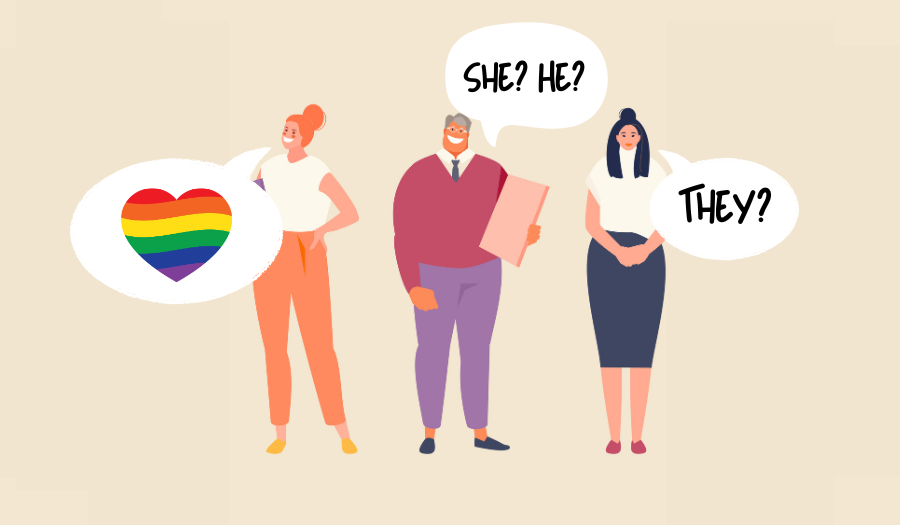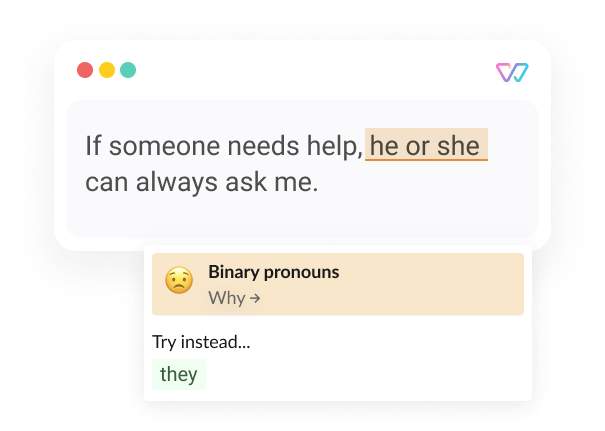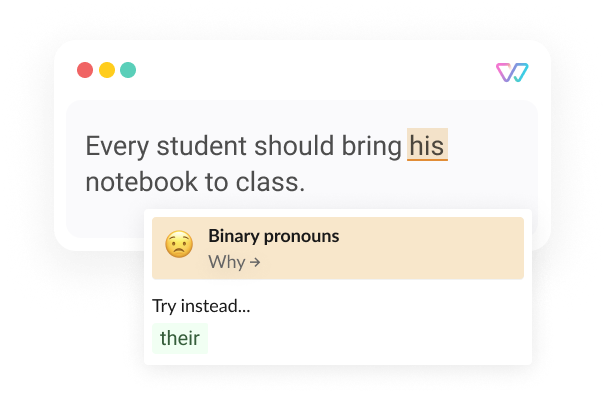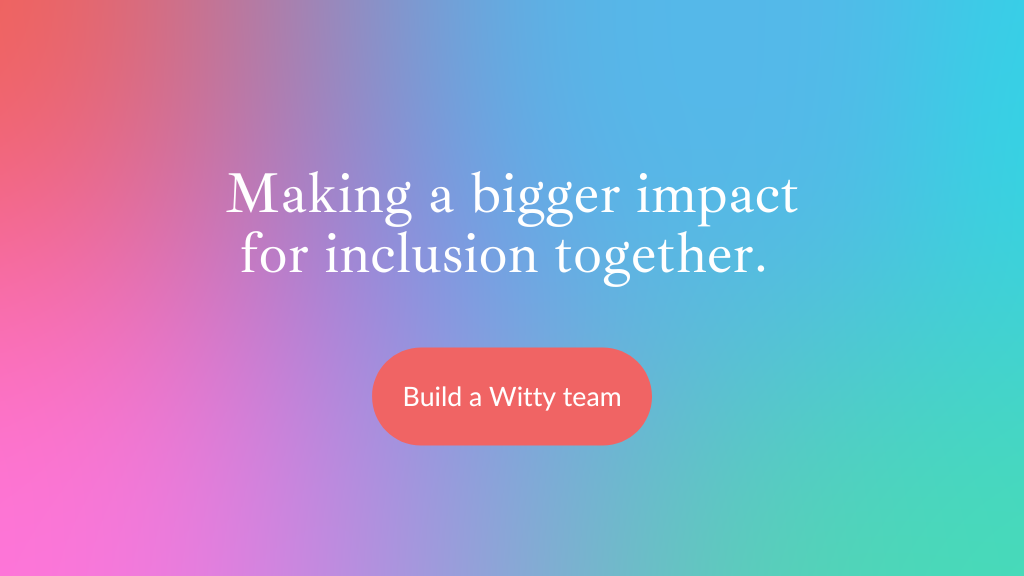 Binary pronouns
Binary pronouns
Confident you're not excluding non-binary people?
To include all genders, adress people directly or use the genderneutral "they"

Exemple de base

Exemple avancé

Many people use he or she and her or him in an honest effort to include all genders. But gender isn't binary, neither biologically nor socially. As a result, these promoun options exclude a large section of the gender spectrum and render it invisible. To signal you welcome all genders, address people directly with you or their name. You can share your pronouns inviting others to share theirs. You can use the singular they or use genderneutral options, such as we, all, everyone, or people.


